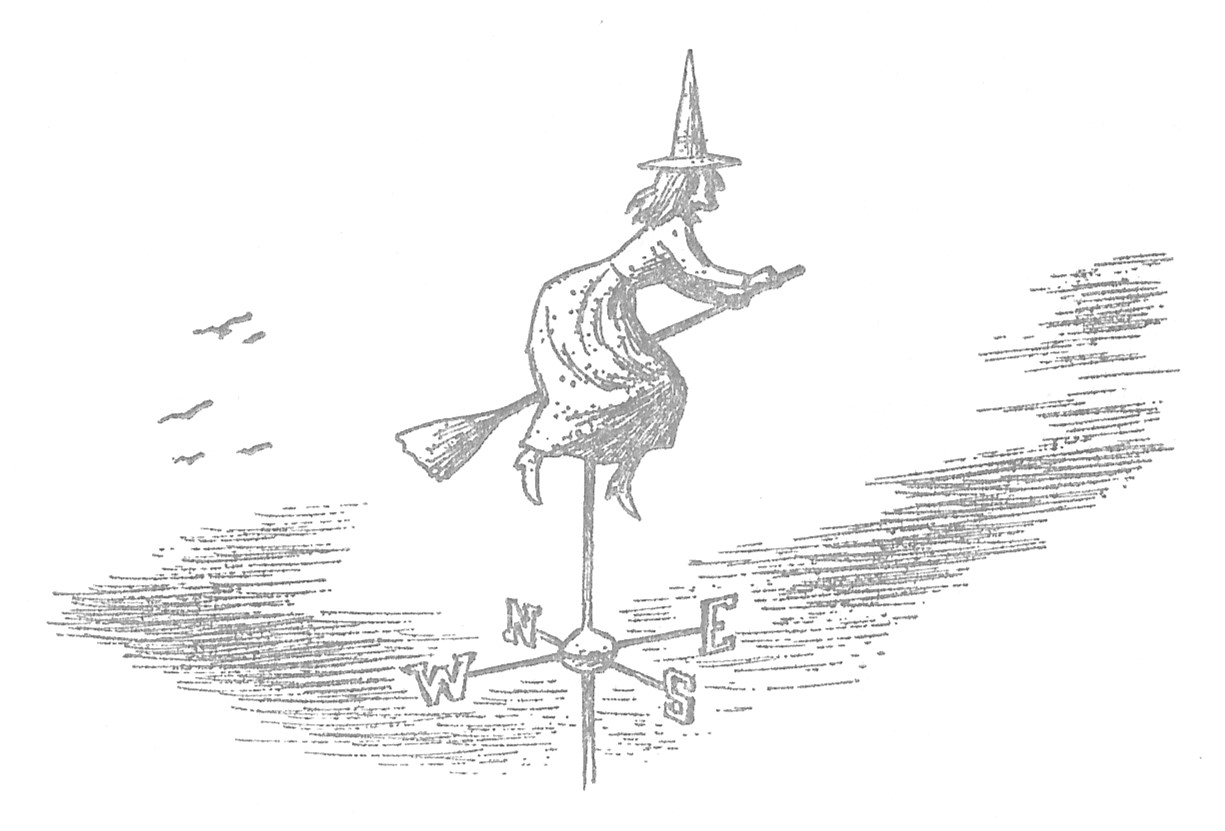In The Happy Hollisters and the Mystery of the Golden Witch, a spooky adventure begins when the Hollister children are approached by a mysterious man who wants their help locating an antique weather vane shaped like a witch. While weather vanes might have been a common sight in picturesque Shoreham, modern kids—or even adults who grew up in cities or areas where weather vanes aren’t common—might not be as familiar with them.
A weather vane, more descriptively called a wind vane, is an instrument used to show the direction of the wind. Though their purpose sounds scientific, weather vanes are not all that accurate, and they tend to have more value as quaint decorations. They are often placed at the highest point of a building and are sometimes used as landmarks. They are commonly seen on farms or in rural areas, and can be found on famous buildings around the United States, like Mount Vernon, George Washington’s historic home in Virginia, or Boston’s Faneuil Hall.
The first weather vane was recorded in 48 B.C. in ancient Greece, when the astronomer Andronicus created one for a tower in Athens as a tribute to the god Triton. A wand in Triton’s hand did indicate wind direction, but even the first weather vane was mostly for architectural purposes, and weather vanes became a status symbol for wealthy people in ancient Greece and Rome. In the ninth century, ancient Scandinavians popularized the use of weather vanes on churches. Around the same time, Pope Nicholas I decreed that all weather vanes should be in the shape of a rooster, kicking off a design trend that we still see today. The use of a rooster is likely a reference to Jesus’ words in the Bible, “Assuredly, I say to you that this night, before the rooster crows, you will deny Me three times” (Matthew 26:34).
While many weather vanes are shaped liked roosters, they come in plenty of other shapes, too, including horses, fish and whales, grasshoppers, lambs, trains, street cars, and fire engines. Most weather vanes were made of cast iron, which was molded into the desired shape, or of brightly colored copper. Weather vanes could also be painted, or even—you guessed it!—coated with gold leaf as in The Happy Hollisters and the Mystery of the Golden Witch. One of the world’s most unique weather vanes, located in the Yukon territory of Alaska, is made out of a retired CF-CPY airplane.
Weather vanes aren’t just practical meteorological tools or decorative architectural accessories—sometimes they actually point to adventure and valuable treasures! Read The Mystery of the Golden Witch to learn more about weather vanes and help the Happy Hollisters solve an exciting mystery!
By Libby Svenson Kennedy
Sources:
Research Notes, Andrew Svenson at the J.W. Fiske Iron Works, New York City, 1965: The Hollister Family Properties Trust

